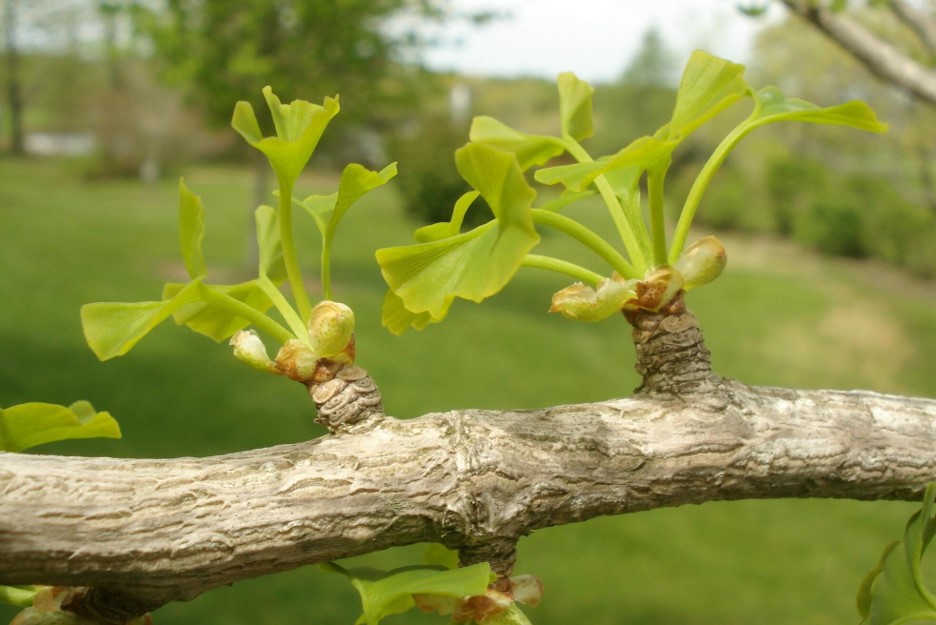By Elton Rogers, DNR Urban Forestry Coordinator; Elton.Rogers@wisconsin.gov or 414 294-8675

Photo credit: Mike Wendt
Spring is my absolute favorite time of the year. The reemergence of life is all around us, and the smell of fresh rain accompanies the sights and sounds of spring. The birds are scouring the soil for fresh insects to eat, the frogs are croaking away in the swamps and the bees buzz freely from plant to plant. Along with these sights and sounds of spring, another incredible transformation is occurring on our largest and longest-lived organisms in the landscape, trees.
Hormonal changes begin to trigger the swelling of dormant tree buds, and they begin to explode into all sorts of leaf shapes and sizes. Many of you have undoubtedly noticed that, along with the dissimilarities in leaf shapes and sizes among the trees, there is also great variability in the timing of bud swelling and subsequent leaf out. But have you also ever wondered what the mechanisms are that control this?
Although the phenology of leaf out is still somewhat of mystery, we do believe that all the following factors can play a role in the variability we see in timing of leaf out.
- Temperature: Temperature plays a vital role in the timing of leaf out for many trees. For trees to survive and thrive in temperate regions, they need to maximize the limited growing season before returning to winter dormancy. Rising temperatures in spring signal to the tree that it is time to “wake up” and start the processes of transpiration and photosynthesis. Trees need to be careful, though; if they are tricked into waking up too early, a sudden drop in temperature could cause frost damage to various parts of the tree.
- Amount of Daylight: Some trees rely on the amount of daylight, or photoperiod, to help signal it is time for bud break. This photoperiod may play a crucial role in protecting some tree species from late frost damage. These trees require a certain amount of daylight before they will break bud, no matter how high the temperature gets. Other tree species have no regard for the amount of daylight. In a forested setting, this would allow some species to take advantage of rising temperatures to outcompete the other trees that leaf out later.
- Wood Porosity: Vessel sizes within temperate hardwood species can play a role in leaf out timing. Diffuse porous wood species (ex., maples) have smaller and more uniform vessel elements and thus are less susceptible to winter injury, such as vessel embolisms. Diffuse porous species tend to leaf out earlier in the spring. Ring porous (Figure 1) species (ex., oaks) have larger earlywood vessel elements and thus are more susceptible to winter injury. These species must put on a fresh layer of sapwood with new vessels before they can start transpiring water for photosynthesis. Because of this, ring porous tree species tend to leaf out later. Note that there are many exceptions to this, so porosity may not be a major factor for many species.

Figure 1: Example of ring porosity on an oak species. Notice the large vessels on the outermost growth ring. The previous year’s growth rings have been occluded through the formation of tyloses and can no longer transpire water.
- Genetics: Genetic variability will influence leaf out timing, not only when comparing different species, but also within the same species. Tree species that have evolved with great genetic diversity will be more likely to see different leaf out timing within their populations. Tree species with low genetic diversity may have a more consistent leaf out timing across their population.
There may be other factors driving leaf out timing in addition to the ones noted above. For instance, evolutionary adaptations to pests, diseases and browsing pressures may have played a role in developing intraspecies leaf out variation. Microclimates, soil conditions, nutrient availability, tree health and more may also influence leaf out on a tree-by-tree basis. There may be other factors that we have yet to discover.
Whatever the cause, leaf out timing can play a role in how we manage our trees. Timing of watering, pruning, pesticide applications and more can all be influenced by when leaf out occurs.
One of these springs, I will remember to take notes and create a list of the various tree species here in Wisconsin and their corresponding phenological timing of leaf. If you found this interesting, I hope you make a note on your calendar to do the same.
